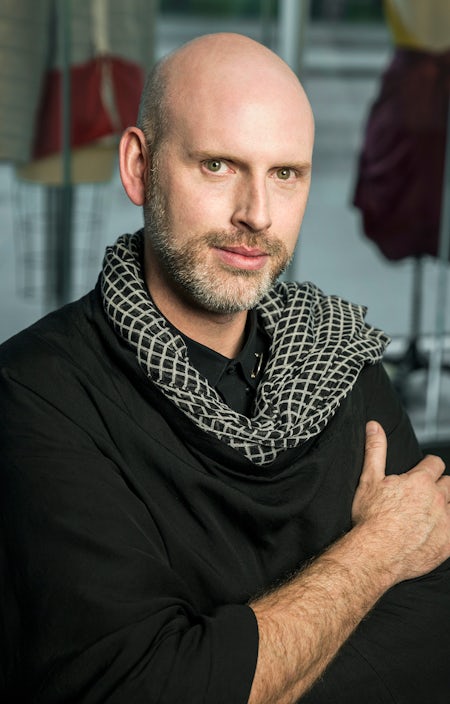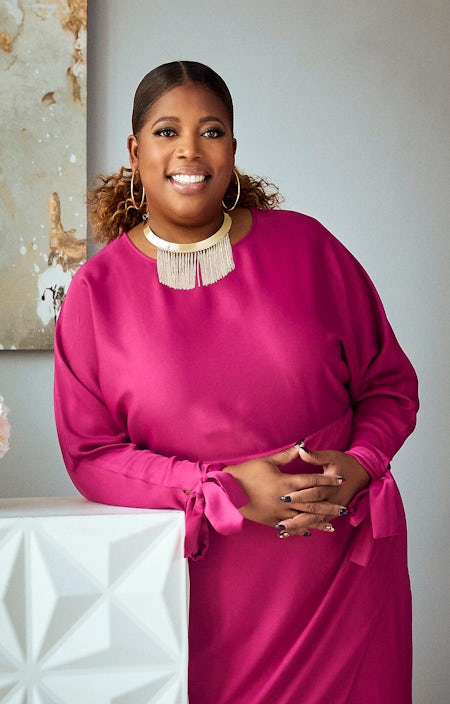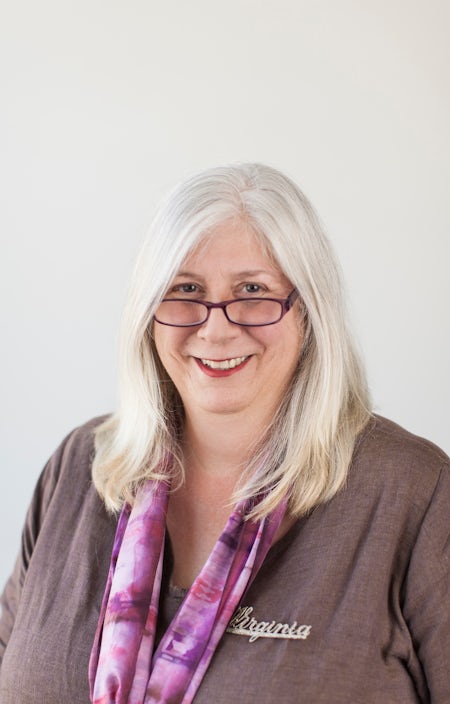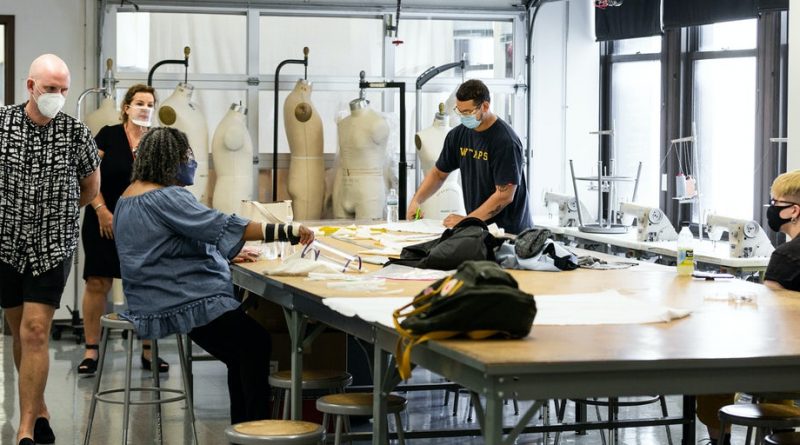At Columbia College Chicago, Rewiring Fashion Education for Today | Education, Sponsored Feature
CHICAGO, United States — As universities and colleges prepare for the unprecedented new academic year, following the Covid-19 pandemic’s disruption to teaching across the globe, educators need to mitigate challenging new requirements and realities in schooling.
From remote working and an increased use of online learning resources, to catering for design material provisions at home and more flexible assignment deadlines, the academic landscape is being transformed for the projected 19.7 million students to enrol in college and university in America this autumn, according to the US National Center for Education Statistics.
Looking to offer a new hybrid educational format for their current and new intake of students, whether taking the BA in fashion studies with concentrations in merchandising or product development, or the BFA in fashion design, College Columbia Chicago’s faculty is preparing for a pandemic-proof approach to fashion education.
The creative, liberal and media arts college, located on Chicago’s South Loop, integrates practical learning taught by leading industry practitioners with an emphasis on bridging technological innovations with more traditional fashion skills — further propelled by a digitised learning environment. With an academic emphasis on racial, cultural, gender, body and class diversity on fashion too, the school’s adjustments to the pandemic have coincided with the rising urgency of civil rights protests and an evolved curriculum to cover its impact.
To hear more about how the school and its faculty is adjusting to the new teaching environment, BoF sits down with three faculty members across the fashion department: Justin Leblanc, associate professor in fashion studies and a finalist and the first deaf contestant on Project Runway; Shannelle Armstrong-Fowler, an adjunct instructor in fashion studies and owner of Chicago luxury curvy bridal boutique, Haute & Co. Bridal; and Virginia Heaven, associate professor in Fashion Studies and the curator of the costume collection at the Chicago History Museum.

Justin Leblanc, fashion studies professor | Source: Courtesy
Justin Leblanc
As an Associate Professor of Fashion Studies, Leblanc teaches fashion design and installation. He works closely with the American Sign Language department on campus and was a finalist and the first deaf contestant on Project Runway.
How has Columbia College Chicago adjusted to the on-going global pandemic?
I was working with students finalising their thesis collections when the campus closed down. It was devastating for them, but our head of department organised approvals to pick up collections, dropped off materials to students’ homes — we even shipped portable sewing machines to students if they didn’t already have one at home.
The Fashion Studies Department have provided workshops to train staff on the online platform we now use called Canvas, where we put our syllabus, assignments, videos — everything.
The school has retrofitted the whole campus too. We have a fashion lab, with shields now up, and it seems very professionally done. We also have to go through multiple steps before we go into campus, so I do feel safe. I believe they really care about the faculty and the students, and they want to make sure we are able to provide everything that we can.
What new challenges has the pandemic introduced in the education sphere?
As an arts school, it’s very hands-on. So, it’s definitely brought up some difficulties, but it also challenges us creatively and I find that exciting. The main challenge for having online courses is that people like human touch. They like to interact with people and, unfortunately, we can’t do that right now. But the next best thing we can do is really understand the tools we have.
At the moment, we are creating videos to share close-ups of techniques with students, which will actually be useful when we are back in a classroom. Students like to watch videos again and again to really pick up the process or method and it’s becoming a very useful tool.
How have you adjusted your classes for the new normal?
One of the things we teach in our classes is how to make design more accessible. It’s about understanding what society needs now. So, with the pandemic, we knew we needed to pull back, switch our gear, understand the times that we are in now and how that could be applied to education.
We knew we needed to pull back, switch our gear, understand the times that we are in now and how that could be applied to education.
For example, during the pandemic, many of us in the deaf community have had our mode of communication removed. I lip-read to communicate with others, so masks take my communication away. So, we did an accessible mask workshop for five weeks this summer, as a collaboration between the Fashion Studies Department and the American Sign Language Department, to help students address real-world situations on the spot. We are a school that is all about designing solutions.
What are you most excited about moving into the new academic year?
2020 has been an eye-opening year for everyone, and it is an opportunity for the students to address events of the year, from the pandemic hit to the election to Black Lives Matter. I’m most excited about the conversations we will have, not only with students but with faculty also.
There’s an opportunity to share how we’re feeling about the pandemic. We can also talk about the social and political unrest and take the opportunity to educate ourselves on everything that’s been going on. There’s a lot of conversations that we will have this fall and that is something that I’m looking forward to.
That’s what we teach our students to do — to really understand what’s happening now. I will be teaching the thesis class, who submitted their proposals in February — before the pandemic hit the US — and the overarching theme was sustainability. When I meet the students this week, I’m curious to see where their heads are at and I have a feeling their thesis collections are going to have changed quite a bit.

Shannelle Armstrong-Fowler, fashion studies adjunct instructor | Source: Courtesy
Shannelle Armstrong-Fowler
An adjunct instructor in fashion studies and owner of a Chicago luxury curvy bridal boutique, Haute & Co. Bridal. During her careers, she has managed PR for brands including McDonald’s, Sears and Kmart.
How do you feel Columbia College Chicago adjusted to the crisis?
Our department at Columbia College Chicago did a great job of rallying all the faculty members together — a lot of whom still work in fashion and are responding to this situation in real-time. So, faculty looking at how to convey an experience to their customer digitally were also able to use the same methods to offer a learning experience for their students.
As a creative arts college, our students need hands-on instruction as well as theory. We started using Zoom to teach classes and now, some students still come in for one-on-one instruction, although the school has a robust policy on how we’re managing in-school instruction.
What new challenges has the pandemic introduced in the education sphere?
As an industry, the pandemic has forced us to find new ways to engage with the customer. So, as educators and industry professionals, not only are we asking how are we going to do that, but we’re also asking, how do we educate the student to drive this next version of the fashion industry?
We also need to teach them how to be conscious, to understand who they are and what their actions mean. I want to have these tough conversations with my students: what happens if the pandemic never goes away? How are you going to sell products? What about your corporate responsibility? The more we incorporate these challenges and opportunities inside of our educational process, the more we can have honest and real dialogues with students.
How have you adjusted your classes for this new normal?
My course is Marketing Fashion Brands, in which I will include case studies from pre, during and post-pandemic. For example, in Chicago, where I have my own boutique, some storefronts downtown are boarded up from where Black Lives Matter protests have been ongoing and some property has been damaged.
I see retailers who have reopened but not taken down the boards in front of their stores. Instead of captivating visual merchandising, boarded up windows have a “we’re open” sign — many declare their support of BLM and invite graffiti connected to the movement. But how long are retailers going to keep the boards up? Or will they make it part of their overall merchandising strategy from a safety perspective?
I want to have those candid conversations around bias and help them through that. I want to create a safe space [to] help nurture this next generation.
I believe the pandemic is forcing students to be much more accountable to themselves and their own learning process. We can’t spoon feed them — I always tell my students, “you can’t ask to represent a billion-dollar brand on one hand and say the dog ate my homework on the other.” They don’t coincide. So, I plan to do both asynchronistic and synchronistic study, to meet every other week, to help students work more independently.
What new tools are you equipped with to teach today?
We now have these smaller assignments that will count towards their participation rather than their grade, which test to see if students have captured and retained the information presented. I can get the analytics in real-time on this tool and know that 30 percent of the students failed this tool or spent five minutes on a nine-minute long video.
What are you most excited about moving into the new academic year?
I’m excited to understand where the students are in their journeys, emotionally, from a mental health perspective. I also want to assess their needs as they transition into college full time again and to understand their expectations.
During this reckoning that the United States is feeling around Black Lives Matter, I also want to understand what their thoughts are around this topic because if they are having some discourse or discomfort for whatever reasons, I want to be able to have those candid conversations around bias and help them through that. I want to create a safe space for our students so that I can help nurture this next generation.

Virginia Heaven, associate professor of fashion studies | Source: Courtesy
Virginia Heaven
An associate professor teaching fashion history and curatorial studies, Heaven is a former costume designer for the BBC and became a curator at Smithsonian Institution, the American Museum of Natural History and, currently, the Chicago History Museum.
How do you feel Columbia College Chicago adjusted to the on-going crisis?
I have an obligation to get the material across to my students, so I’m going to do everything I can to do that. I’m providing time outside of class where students can come to me for one- on-ones, to connect with me personally, if they’re struggling. I think things are happening now that will allow us to boost our in-person teaching.
Moving classes online has forced me to really think about the visuals I was using. In a classroom, your physical being is projecting energy. But when you’re at the end of a screen, you’ve got to be much more visually dynamic. We’ve also talked about our anxieties and concerns too, offering a personal connection you don’t get in the classroom because there’s too many people.
This whole notion of things being asynchronous also doesn’t work for me so I have decided that students should be physically active first. They need to actually engage with me. This may not be everything they would hope for in a college experience, but we’re going to make the best of it, and we’re all going to be learning as we go.
What new challenges has the pandemic introduced in the education sphere?
I’ve worked with young people for years and I don’t think it’ll be too hard for students today to adjust to virtual learning as they are the digital natives. I think they’re probably disappointed that they’re not with all of their friends, or making new friends, but they’ve also endured the pandemic for the same time that everybody else has. They have a new normal too.
In a big classroom, you might have a few students not quite as adept at first. But [now], all students can work at their own pace.
So, in some ways, I think people are dramatising what could actually be an opportunity for students. In a big classroom, you might have a few students that are not quite as adept at first, and sometimes those kids drop out because they just can’t stand the embarrassment. But without everybody looking over their shoulder, all students can work at their own pace.
How have you adjusted your classes for this new normal?
I’m using Zoom as a basic platform for everything, but I will bring in guests lectures too. For one of my classes, for example, I’m doing a panel discussion to talk about queer fashion and design; we’re going to be talking about Black fashion and cultural appropriation of African American design and style into mainstream fashion; we’ll think about size inclusivity. The students are finding their taste and their understanding, so I want to offer a tasting menu.
Columbia College is a very open-minded university, so I believe students expect to fit in, no matter who they are or how they identify. And often, when you’re in a classroom, you have students from all over the world, but they all dress the same, wear the same labels, and their identities blur.
We are now coming at this from different places, different perspectives, different expectations, and students have to be aware of that their colleagues might be calling in from Germany, or China, or the UK, adding another dimension which is often invisible in the classroom. I think it is important for students, early on, to become aware of the diversity of the population and to engender not just empathy, but also understanding.
This is a sponsored feature paid for by Columbia College Chicago as part of a BoF Education partnership. To learn more about Columbia College Chicago, please click here.


